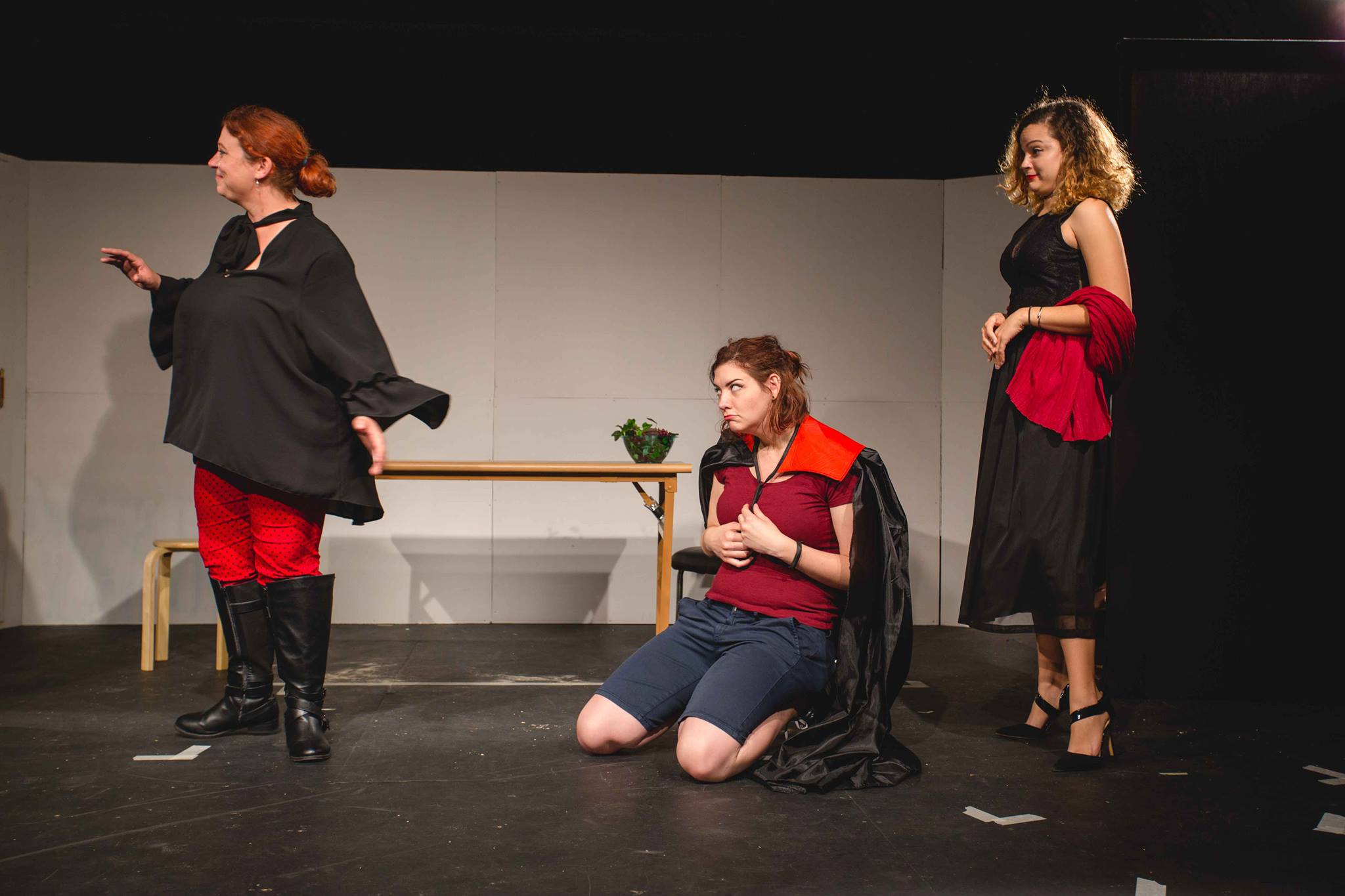GPP’s The Taming of the Shrew: A Silly, Naughty, Hilarious Show

Written by Andrew Vlasblom
Photographs courtesy of Ben Robins
“Come on, and kiss me, Cato!” In the context of an ordinary play, a Shakespeare aficionado might think that the actor had a slip of the tongue and messed up a line. But Gwangju Performance Project’s (GPP) recent adaptation of The Taming of the Shrew – in which gender roles were essentially flipped for all the characters – could hardly be called “ordinary.” Performed at Yunbaram Theater in Dongmyeong-dong with six shows spread over two weekends, the GPP’s adaptation of The Taming of the Shrew felt funny and fresh.
The idea of reversing gender roles was conceived by the show’s director, Ender Waters. This idea incited many participants to become involved, and the fun-loving cast and crew worked steadily to bring the show to the stage. The script was altered just enough to swap the gender roles; character names were altered, but that’s about it. This, then, left the cast with an abundance of material to mine for comedic moments. Inverting the genders lent the play slapstick and somewhat sitcom-esque qualities, in which women were dominant, and men were submissive and rather weak. This proved thought-provoking, as I realized that while the show’s adaptation of swapped gender roles was pretty funny to watch this way, a direct reversal in the original 1600s’ version written by Shakespeare would likely be somewhat disturbing and disempowering to today’s women. To Waters’ and the cast’s credit, they kept the play’s tone light and humorous rather than becoming overtly political, allowing the audience to take from the play what they would with regard to gender roles.

I was fortunate enough to watch the production twice – both the first and last show – and while I enjoyed both in equal measures, it was nice to see the progression of the actors becoming more comfortable with their lines and their characters by the final show. Rachel St. John capably owned the swapped gender role of the dominant Petruchia, lending her character a charming physical comedic force that had me laughing consistently. As Petruchia’s servant, Grumia (played by Shelby Brinkemeyer), gave a likewise hilarious performance with a sheer amount of bumbling and drunken physical comedic moments. The two made a great pair, and I would welcome the chance to see them together on stage again in the future.
Jacob Tripp, as the other lead character, Cato, excelled in taking abuse from his overbearing wife Petruchia in a way that brought many a chuckle and giggle from audience members. Tripp seemed truly well-suited for this role, giving his character timid and feminine qualities, but not to the point where he over-acted or became completely unbelievable. He was completely ridiculous, but that was kind of the point.

There were several other standouts for me in the play, one of which included Boipelo Seswane, who played the character of Baptistina, the wealthy, no-nonsense mother of two sons, Cato and Bianco. While her character did not call for much in the way of physical comedy, her deadpan reactions and lines caught me off guard multiple times and had me chuckling. Elizabeth O’Sullinecki’s and Kaitlyn Wachter’s characters shared perhaps my favorite scene. Both O’Sullinecki (Gremia) and Wachter (Trania) were hilarious sparring together while plotting to ensnare their dream man, Bianco (played by Jack George). The physical comedy in tandem with the lines normally spoken by men as they compared the assets they would use to seduce Bianco worked to great effect. With a simple facial expression, James Roundy stole a scene that in the context of the goings-on couldn’t have been more fitting, darting his eyes to and fro confusedly from the time he entered until he exited the stage. Likewise, Jo Park hilariously stole a scene with her head – and only her head – as the rest of her hid behind a door.
While I could go on about the cast – all of the actors did a fantastic job – there wouldn’t be a show without the crew behind the scenes. Jonty Trelfer, who has been with the GPP since 2011, did a great job with the lighting. It is clear that Waters and the stage manager, Sarah Hale, knew what they were doing when it came to time efficiency on set and making sure that the finished product ran smoothly. They were colorful and efficient, including props such as rotating pictures that allowed for speedy transitions between scenes. The costumes could have been any casual clothes; but not on Stel Diane’s watch. As the costume designer, Diane did a great job upping the comedic vibe in different scenes with different costumes, which accentuated the fact that this play was purposely not set in any particular era in history: for example, there was a scene where Petruchia walks in, wearing Elmo pajama pants while reciting her monologue.
In my lifetime, I have had the opportunity to watch The Taming of the Shrew four times: twice put on by professional theater teams, and twice this past month by the GPP. I can say without hesitation that I enjoyed the GPP’s adaptation the most. With a unique twist on the entire play by inverting gender roles of the characters, and an endearing cast who were clearly having fun but also conscious of not over-acting, the GPP once again brought to Gwangju a thoroughly entertaining and thought-provoking effort in The Taming of the Shrew. The cast and crew can be proud of their show, a success that serves as a reminder of how special Gwangju’s artistic community is, and how fortunate we all are to be part of it.
The Author
Hailing from Canada, Andrew Vlasblom has lived in Gwangju since August 2009. He enjoys playing the accordion and hitchhiking.







